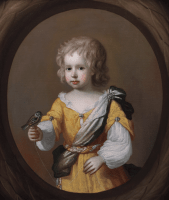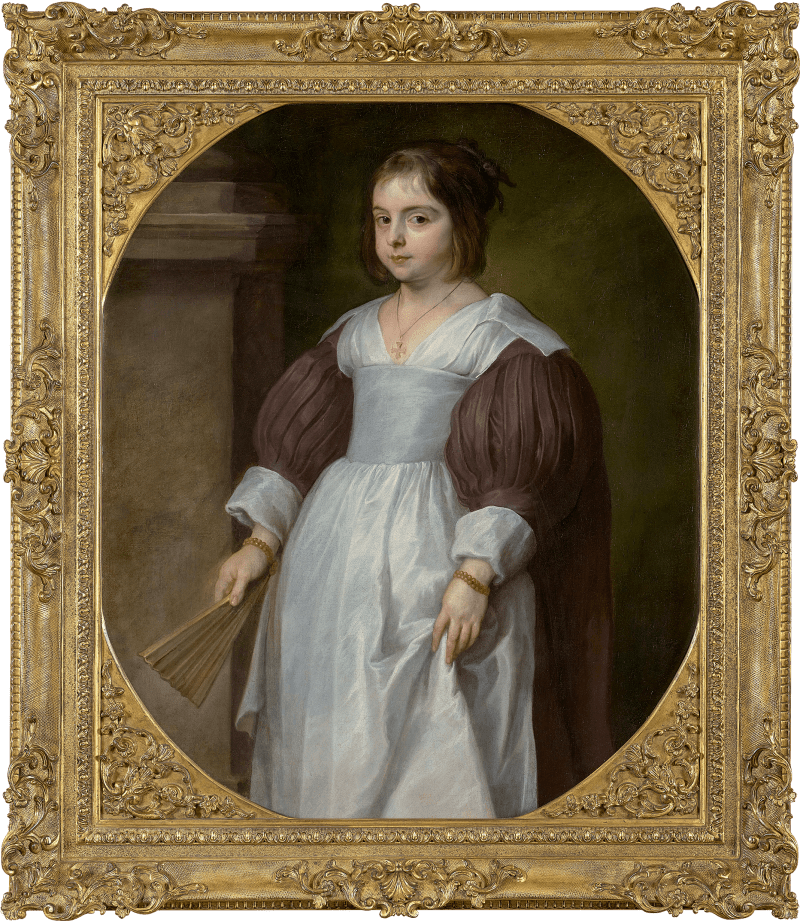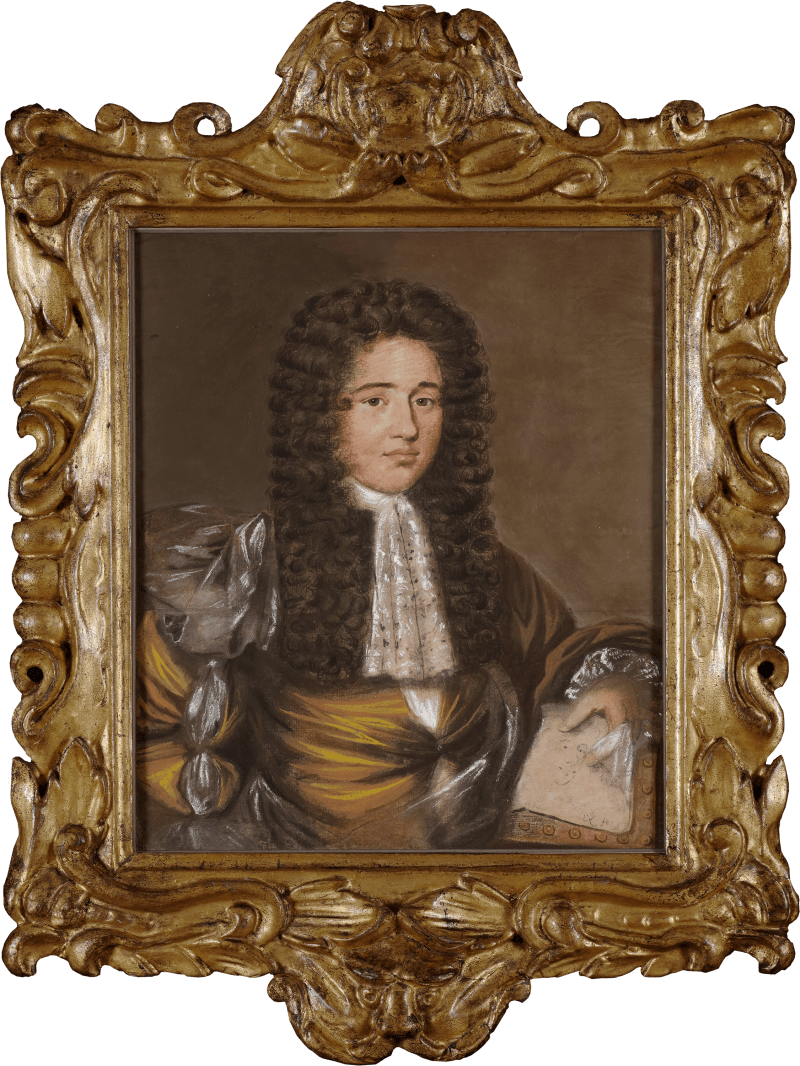We are grateful to Jane Fenlon and Caroline Pegum for their assistance when cataloguing this work and for confirming the attribution to Garret Morphy.
This charming portrait of an unidentified young boy by the celebrated Irish painter Garret Morphy has only recently come to light and is an exciting addition to his oeuvre. Its near-pristine state of preservation allows a more fulsome appreciation of Morphy’s talents and is a pertinent reminder of his abilities as a painter of children.
Garret Morphy was arguably the first painter in Ireland to produce work to a standard comparable with the painters of London and Edinburgh, and to maintain a thriving independent practise. In 1673, he is recorded as working with Edmund Ashfield in London. This places him in a Roman Catholic circle of painters, as Ashfield had been an assistant of John Michael Wright, and it was from among the Catholic gentry and aristocracy that Morphy drew the majority of his...
We are grateful to Jane Fenlon and Caroline Pegum for their assistance when cataloguing this work and for confirming the attribution to Garret Morphy.
This charming portrait of an unidentified young boy by the celebrated Irish painter Garret Morphy has only recently come to light and is an exciting addition to his oeuvre. Its near-pristine state of preservation allows a more fulsome appreciation of Morphy’s talents and is a pertinent reminder of his abilities as a painter of children.
Garret Morphy was arguably the first painter in Ireland to produce work to a standard comparable with the painters of London and Edinburgh, and to maintain a thriving independent practise. In 1673, he is recorded as working with Edmund Ashfield in London. This places him in a Roman Catholic circle of painters, as Ashfield had been an assistant of John Michael Wright, and it was from among the Catholic gentry and aristocracy that Morphy drew the majority of his patrons.
Morphy’s travels up to the year 1694 - when he painted Lady Shelburne in Dublin - are not certainly known - but it is likely that he divided his time between England, where he was recorded from 1685-8, and Ireland. The fact that George Vertue never refers to Morphy in his notebooks is usually taken as proof that Morphy did not return to London in the 1690s. He made his will, describing him as ‘of the City of Dublin, painter’ on November 1st 1715, which was proved on May 12th in the following year. The only other near-contemporary reference to him comes with an advertisement in the Dublin Evening Post June 15th - 19th no.99, for a picture sale in Dame Street that includes ‘several portraits of the gentry of this kingdom done by the famous Mr Murphy.’ Although his tutorage is not known for certain, Morphy’s style proposes Gaspar Smitz as a possible teacher, but Morphy’s work demonstrates an eclecticism that shows he was susceptible to and aware of many influences in the London art world of the 1670s.
Stylistically, the present work bears a close resemblance to several extant portraits by Morphy of children, including those of the young Master Absstrbus Danby, the young Henry O’Brien of Stonehall, and the portrait of Anne O’Neill painted in the early 1690s.[1] All these works reveal Morphy’s characteristic use of shading on the right cheeks of the sitters and the distinctive almond-shaped eyes. The porcelain-white skin tones, bright red lips and soft depiction of the hair are also typical of Morphy at this date, as is the strong highlighting on the sash and thick application of paint on the costume.
[1] National Gallery of Ireland [NGI.4148]











